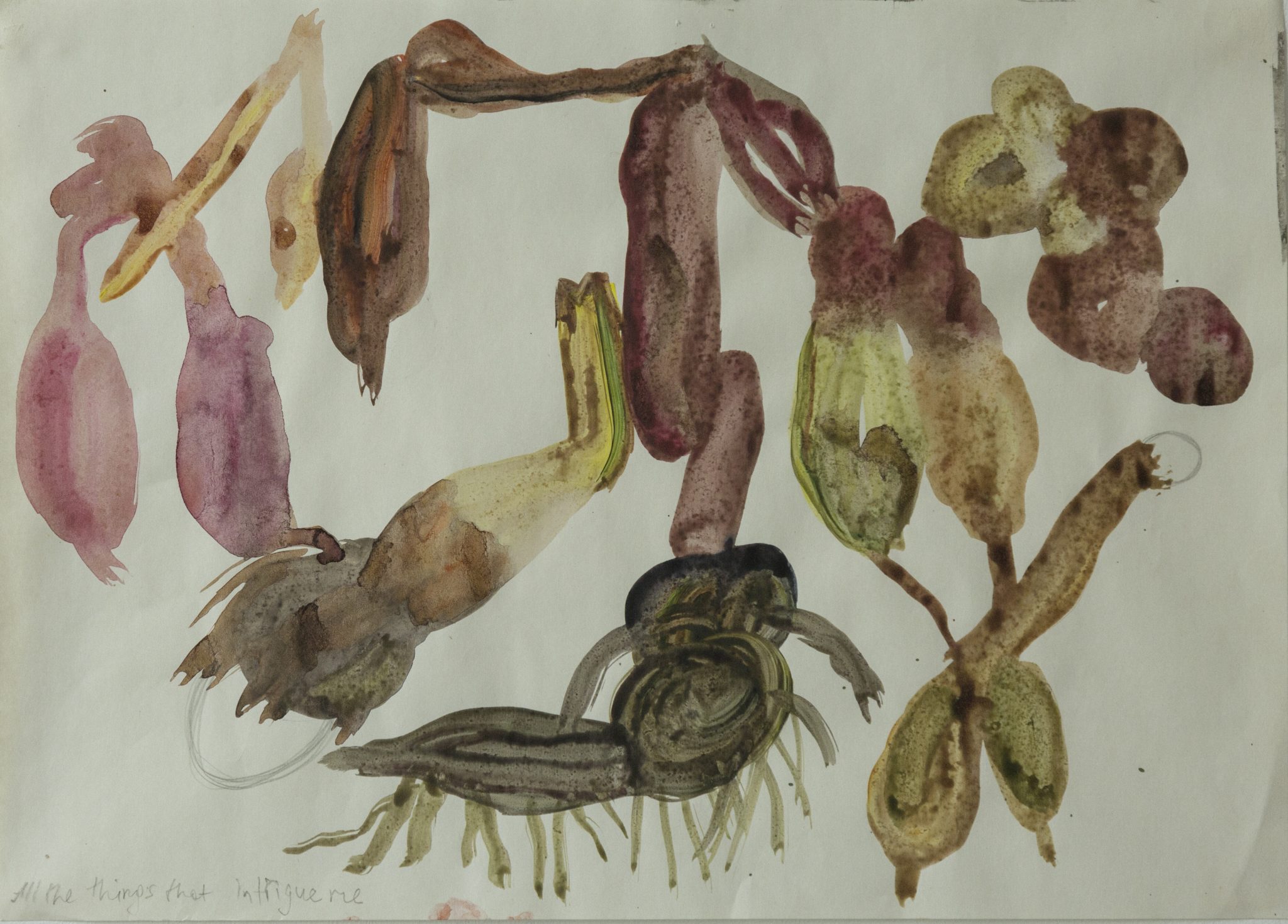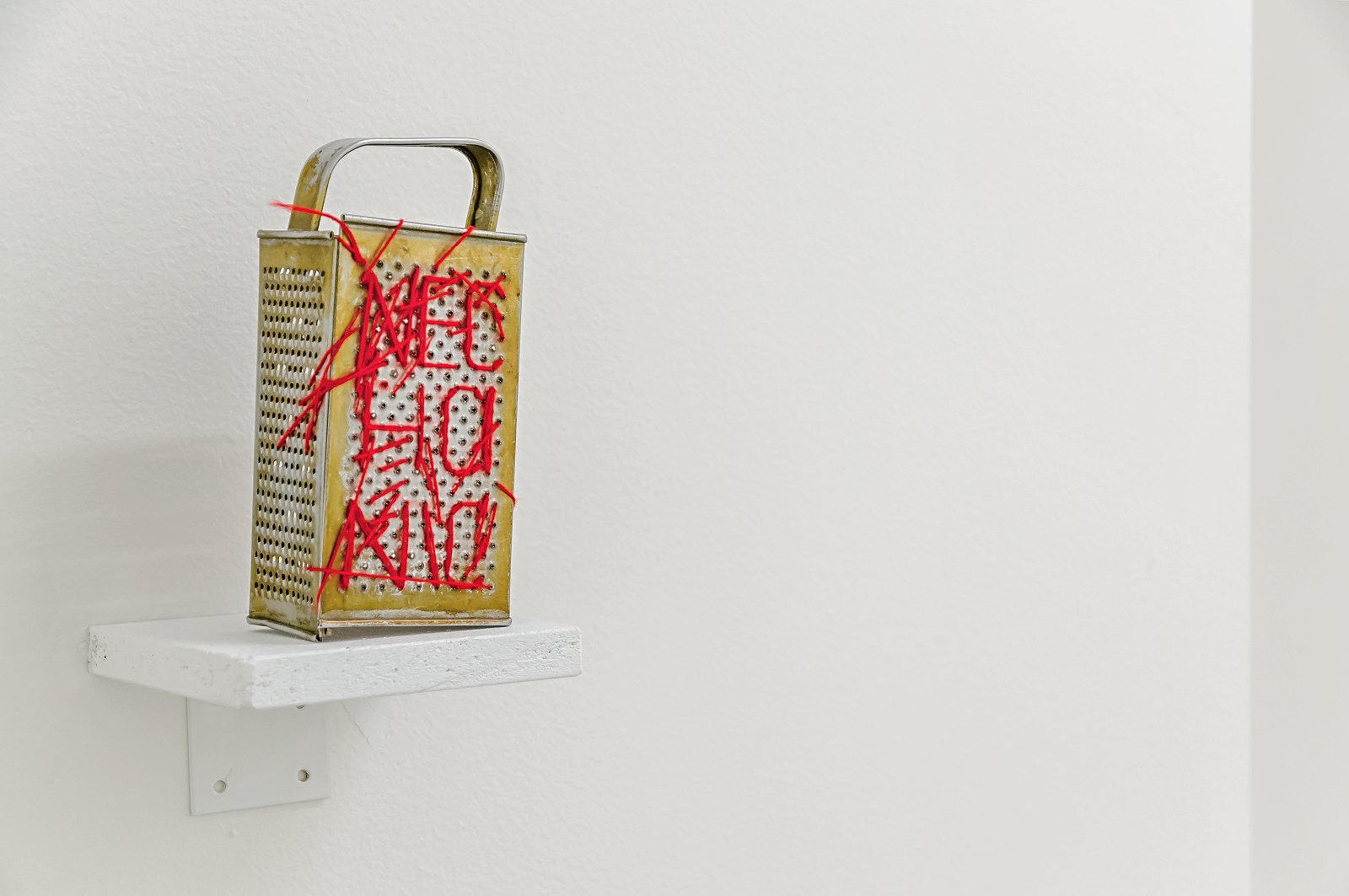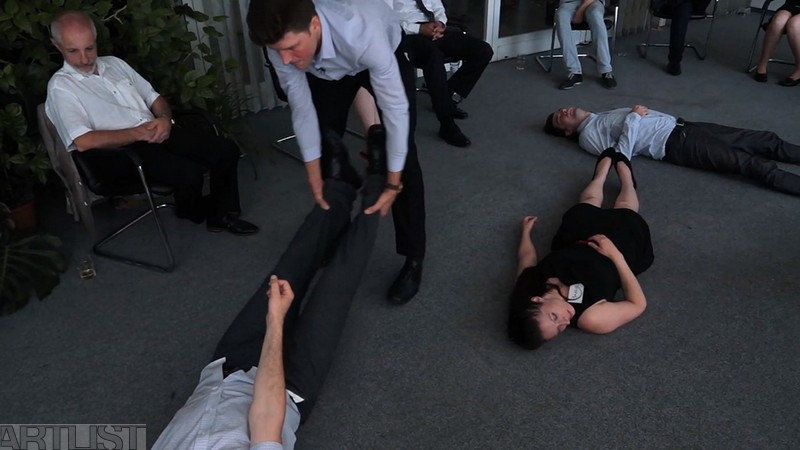Established 360 years ago, in 1663, the Royal Academy of Fine Arts in Antwerp, Belgium, is housed in a former monastery in the historical center of the port city. The walled garden served as a cemetery at the time when the buildings accommodated the religious community of the Ordo Fratrum Minorum. It was redesigned in 1841 as an open-air-sculpture park and museum to be redeveloped in 1905, designed by the City Architect and graphic artist Émile van Averbeke; and from 1974, by royal decree, it is classified as a protected-landscape area and assigned to an arboricultural plan. The academy’s website describes this garden as an oasis in the city center that attracts tourists, city residents, wanderers, art students, and teachers. Eline De Clercq’s community project, Sympoiesis Garden, involves gardening together as an artistic practice. In weekly horticultural sessions, students and artists dig, tend, plant, harvest, compost, recycle, observe, connect with, and think about ecology from a nonhuman-centric perspective.
It is perhaps no coincidence that Sympoiesis Garden, which means “making together,” is installed on the land on which the renowned Royal Academy of Fine Arts buildings stand. Etymologically, academy, or in Ancient Greek, Akadēmía, refers to a garden of trees and a gymnasium situated outside of Athens which became known as Plato’s center of philosophy; one that was based on conversation. In the same fashion, by placing community central to her project, De Clercq counters the classical pedagogy of top-down, single-voiced, and lecture-based instruction that was the conventional model at the Antwerp-based academy for centuries. In her notebook, she writes: “When we arrive in the garden the garden is already there,” referring to the garden’s multi-centennial-long history and proposing her decentralized approach to it in one breath. Eline De Clercq can best be introduced as a versatile artist. She’s talented in various creative areas like painting, drawing, photography, filmmaking, cooking, and gardening. She also enjoys sewing, reading, writing, publishing, and correcting historical inaccuracies. She is a three-year-long postgraduate researcher in the academy’s Art and Ecology study group. The dean, art historian, and curator Johan Pas, explained how De Clercq’s project behaves quietly and courteously, synchronizes with the biorhythm of the institution, and how, via the physical digging in the soil it unearths contemporary concepts. Topics include art, ecology, equality, education, decolonization, peer connections, queer kinship, and more. As a figure of speech, the community-driven Sympoiesis Garden grows in a rhizomatic manner, like a map, allowing us to enter and exit the project and its myriad of interbeing concepts from any point; all of which are equal and interconnected. Imagining that over the past three centuries, the garden has witnessed, experienced, and memorized ecological and societal changes, we will join it via the soil.

The earth contains the human remains of 15th to 18th-century Franciscan friars, lay brothers, and observers of the Catholic religious order. In order to not disturb their eternal peace the artist raised the garden’s bed. By doing so, Eline De Clercq prepared the figurative canvas on which the Sympoiesis Garden is painted. In her journal, the artist writes: “From the beginning, our group observed the garden’s natural conditions and approached it intuitively. Digging exposed pieces of brick, shards of glass, and pockets of dull sand. Considering the natural flow of rainwater we carefully followed and extended its path into a river that halfway branches off into two diffluences that open a space for an island in the middle. We used excess soil to raise the island’s twin peaks, placed moss on top, and planted old ferns on the riverbanks.” She continues her report by explaining how the sight of their non-intrusively created micro-landscape reminded the gardeners of the Cuban-American, earth-body artist Ana Mendieta (1948 – 1985). “In this string figure-inspired moment, materiality manifested itself alongside a semiology that works. It makes sense. We must remember,” says De Clercq. Mendieta’s oeuvre of physical-spiritual performances and ecofeminist body and land-art projects, in which she used organic materials, such as earth, soil, mud, grass, water, plants, and human and animal blood, is in the contemporary art discourse still considerably undervalued. De Clercq adds: “The artist shows the land as a form of symbiotic belonging to an ecology of human and more-than-human narratives. In remembrance of her work, we designated the mountain ‘Ana’ by placing a sign in her name. Interestingly, the creation of a monument for Ana Mendieta raised atop a pile of mud that has been collectively identified as an island and a mountain, perhaps speaks a bit against the nonhuman-centered approach that the community-garden group declares in one of its manifestoes-in-progress. But here, important nuance should be made and will be followed by another important problem. First the nuance; as a space of situated knowledge and sympoiesis, the garden is a forum to be understood in both definitions of the word: a meeting or gathering, and a setting or agency. As such, in their intuitive gardening, the members of the forum experienced in doing a process that recognized elements from nature that we (humans) gave names (river, island, hill, mountain, valley, meadow, field, forest, and so on), and via labor, free-associative thinking, and dialogue, they agreed to evoke the spirit of an artist who since that moment serves a meta-gardener. Ana Mendieta is made present in spirit by the ritual of the signification of the mountain. This is situated knowledge, adding De Clercq: “a declaration of support to all people who go against the current like the artist did in her time and place.” But now we have arrived at a slippery slope. The mountain is not a mountain, just as it is not Ana Mendieta. What we encounter here is the problem of language. In a telephone call, Eline De Clercq remarked that “a plant doesn’t call itself plant” and it is agreeable that any plantae are most likely unaware of humans defining it as such, let alone in Latin. Therefore, it might be that our language, i.e. our vocabulary, is useless, or from the nonhuman perspective of flora: meaningless; therefore, language ought to be rethought entirely in agreement with the garden. The “making together” promise of the Sympoiesis Garden is now indeed faced with this semantic challenge based on mutualism in order to be on an equal footing with the garden. To avoid linguistic colonization the project should be inclusive of the garden’s nonhuman-biological-communication efforts. Integrating them would lead the community members to new kinds of artistic and intellectual freedom and expressiveness. The garden at the Royal Academy of Fine Arts should be liberated from its non-natural history, which includes foreign occupations and the colonial past, as well as its varied functions as a monastery cemetery, an open-air sculpture park, and an art-academy oasis. These histories are imposed by humans and do not reflect the garden’s true nature. In this context, the artist agrees that “Such positional change allows us to co-exist, as a multitude, together, via a thinking with the garden.” To think with the garden suggests that we have to rethink the roots of our thinking and we have to do so with the garden, existentially and experientially. Perhaps, some of the groundwork of this radical rethinking of language has been laid in the still-emerging transdisciplinary field of ecopsychology from as early as the mid to late 1960s, around the same time as Ana Mendieta’s formal-art education, which may have informed her. The Spell of the Sensuous: Perception and Language in a More-than-Human World can serve as a relevantly recent guide into the union of phenomenology, cosmovision, and traditional ecological knowledge systems.
In their weekly work meetings in the scenery of their dynamic space of non-propositional knowledge, the non-lexical communication between the gardeners and the garden is focused on the restoration of ecology. Therefore, equitably, Eline De Clercq’s gardening plan is entirely guided by the nature of the academy garden’s intimacy of different zones and patches. The artist imagines herself to be in service of the garden; a heterogeneous relationship characterized by [co-]dependency, transition, and impermanence. If both artmaking and gardening have demiurge-like qualities, i.e. those of the creator, world builder, and caretaker, De Clercq’s intention of gardening together as artistic practice is profound and expansive. “To extend the artist’s practice from the confined studio to the messy and unpredictable open field of entangled thinking with other species,” she writes, is just the start of what De Clercq anticipates with the Sympoiesis Garden. Nature doesn’t stop at the academy’s garden wall. “A bee will fly in and out. Every day, birds interact with a territory that consists of several gardens, a park, and a green buffer zone along a road. Comprised of all the green patches in the city there is only one garden in Antwerp. Restoring its nature is about creating an overspill; every cluster of healthy plants disperses seeds across the city and increases biodiversity. The Sympoiesis Garden’s patches are ecology laboratories,” and they are connected to all green zones in the city and beyond, like a network.
Based in Antwerp, Belgium, Eline De Clercq (she/her) is a visual artist who works at the intersection of gender, lesbian identity, and ecology. She uses gardening as an artistic practice in reaction to climate change. Follow Sympoiesis Garden on their Instagram page: @royalacademyantwerpgarden





